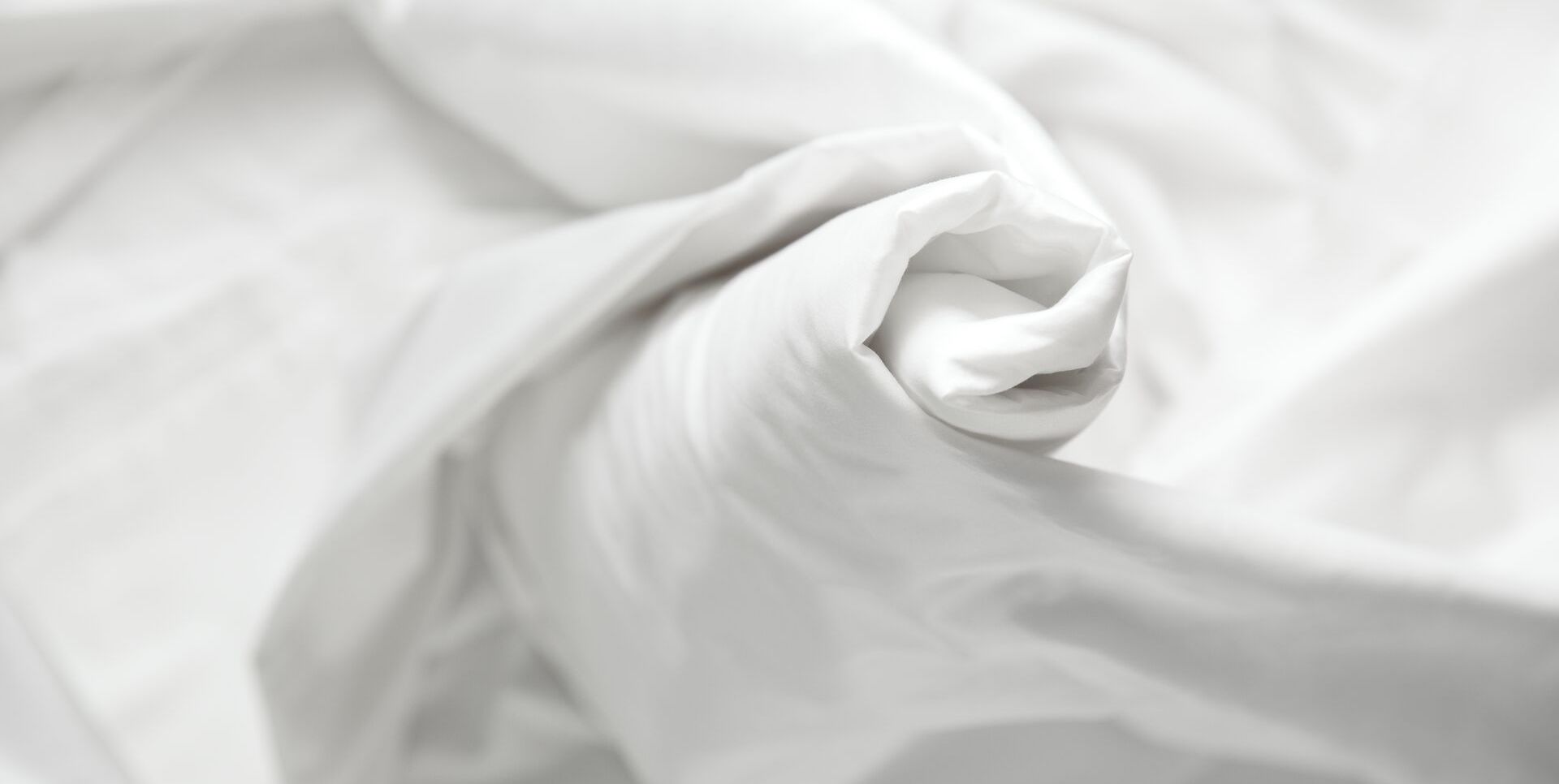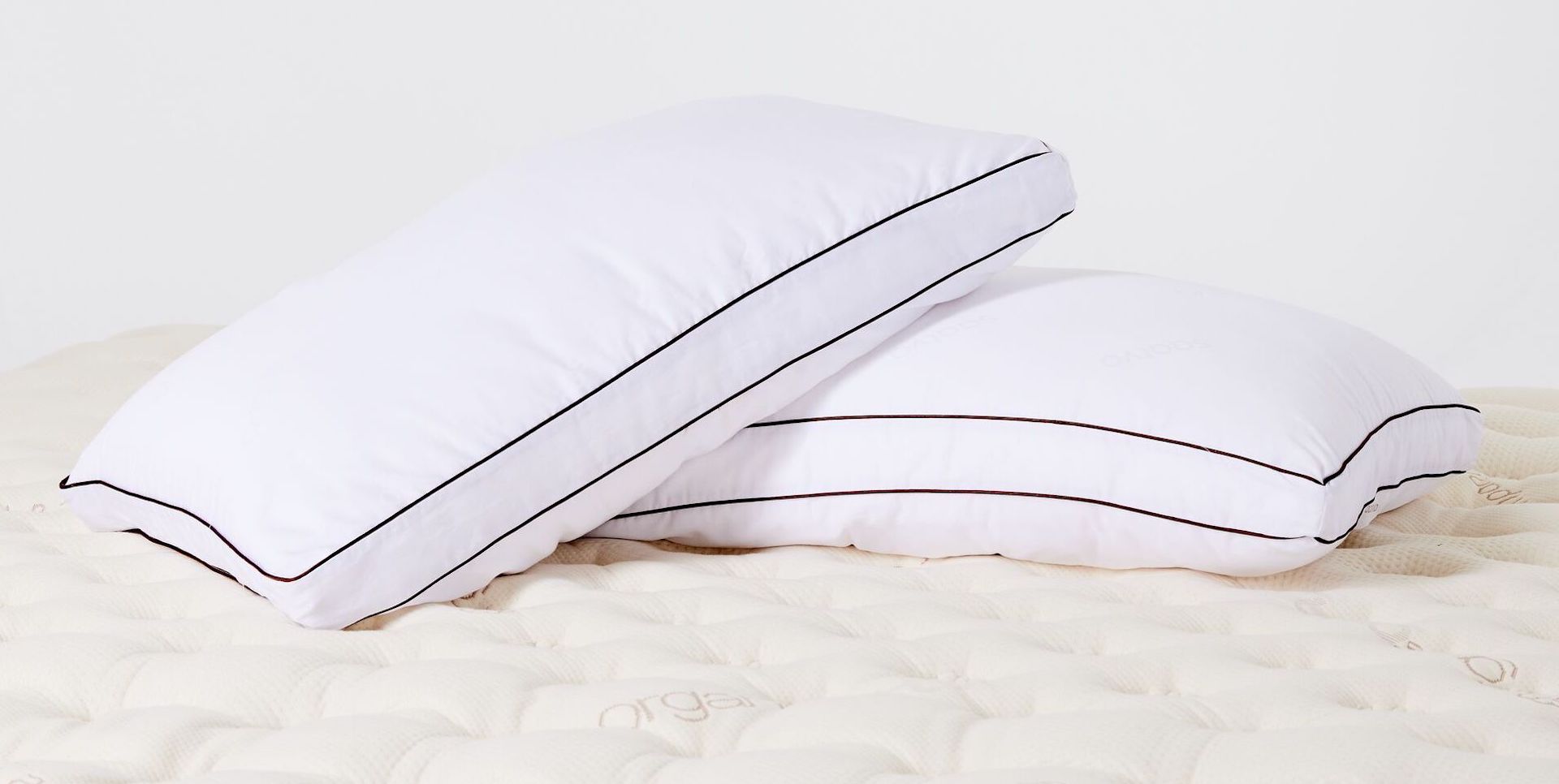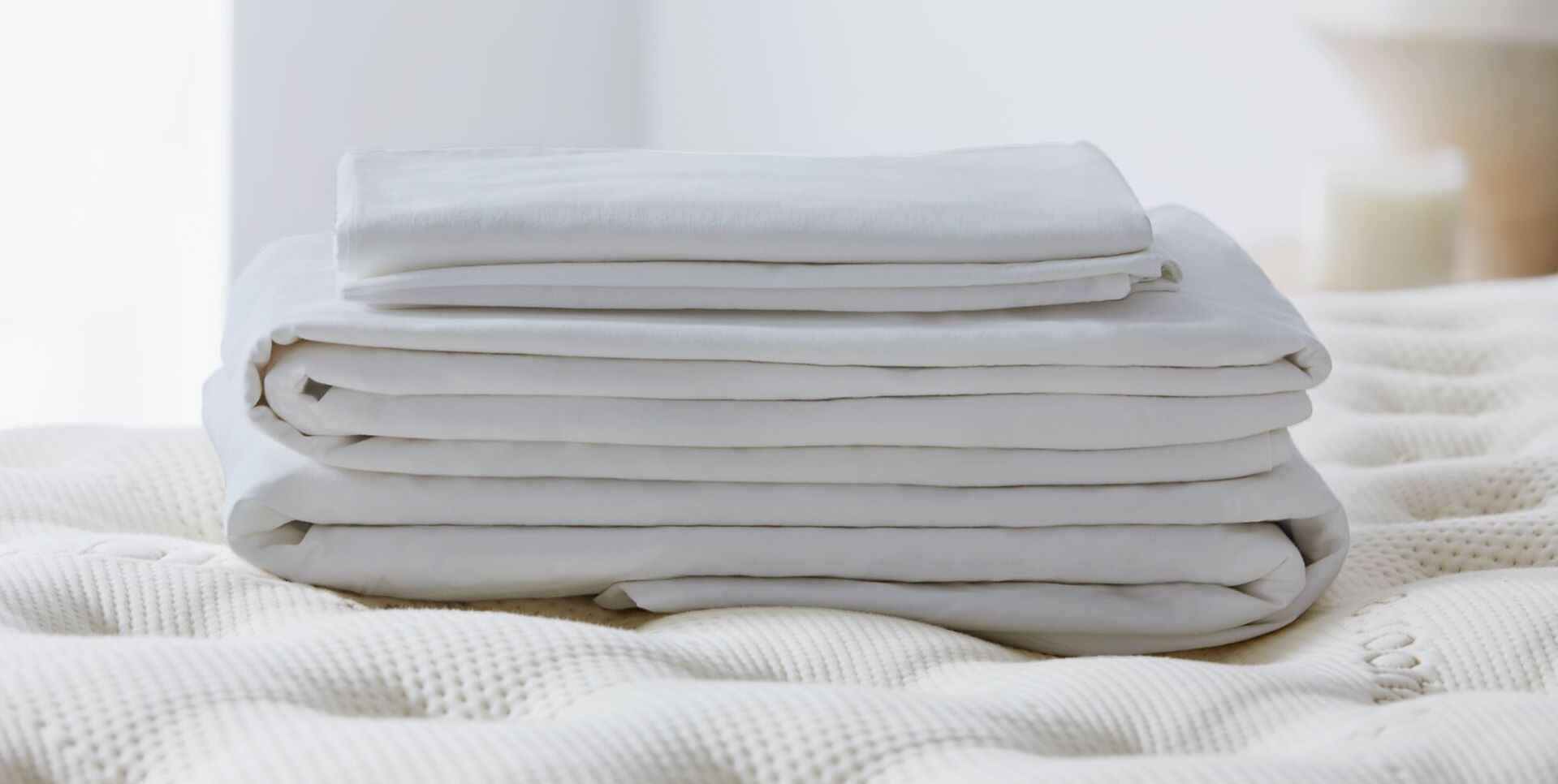If you suffer from allergies, you need to be particularly careful about the kind of bedding you put on top of your mattress, as well as how you care for it. Your bed can easily become the perfect breeding ground for certain allergens, but the right bedding can help keep irritants out.
To reduce your allergy symptoms throughout the night, we’ve outlined the best bed sheet materials and accessories. Additionally, we’ve shared the most common allergens found in your bed and best practices for cleaning your sheets.
5 best hypoallergenic sheet materials
If you have allergies, you should always opt for hypoallergenic bed sheets made of natural fibers. Because of their breathability, these natural materials will help keep you and your bed sheets dry, preventing the spread of dust mites, which prefer humid environments.
Opting for a bed sheet set made out of hypoallergenic materials can help you reduce your allergy symptoms throughout the night. The five best bed sheet materials for people with allergies include:
- Bamboo
- Silk
- Cotton
- Linen
- Microfiber
Bamboo
Bamboo is a great material for bed sheets because of its natural breathability. Bamboo sheets have natural moisture-wicking properties, which can help reduce the chance of mold and the spread of dust mites. This material is excellent for those with sensitivities to dust, mold, and mildew.
Silk
Silk is another high-quality natural fiber that can help reduce your allergy symptoms for a good night’s sleep. Silk is not only the softest bed sheet material on the market, it can also help soothe sensitive skin. Additionally, because the silkworm spins silk like a cocoon to keep away predators, it has natural protection against allergens like pet dander and dust mites.
Cotton
Cotton is by far the most popular option for bed sheets. It’s easy to clean, affordable, and naturally hypoallergenic. Because it’s so breathable, it doesn’t trap moisture and can reduce your allergy symptoms if you’re sensitive to mold and mildew. Some cotton sheets are even undyed or made with environmentally-friendly dyes that won’t irritate your skin.
Keep in mind there are a lot of different types of cotton sheets on the market. Some are a blend of cotton and other synthetic materials, while others are all-natural. Ideally, you’ll want to look out for a sheet set made of 100% cotton. Synthetic blends can irritate your allergies, especially if you have sensitive skin.
Linen
Linen is another material that’s naturally hypoallergenic. Linen has unique filtering properties that greatly reduce the number of allergens and germs typically found in bed sheets. Linen sheets are effective against most types of allergens commonly found in your bed, including dust mites, pet dander, mold, and mildew. (Learn about antimicrobial sheets and why you might want them.)
Microfiber
Microfiber is a wrinkle-resistant, hypoallergenic material perfect for bed sheets. It’s soft, durable, and easy to clean. Additionally, its tight weave pattern can help reduce the number of allergens.
However, you’ll want to avoid any brushed microfiber sheets. Because they have a fuzzier texture, they’re more likely to trap allergens within them. You should opt for a traditional set of microfiber sheets instead.
Other hypoallergenic bed accessories
Curbing our allergy symptoms doesn’t stop at choosing the right bed sheets. You’ll need to ensure the rest of your bed accessories, including your pillows, mattress protectors, and comforter, are allergy-friendly.
Pillows
Pillows, just like your mattress, can easily become a breeding ground for dust mites if you’re not careful. Down and feather pillows aren’t a great choice due to the particles of dust that remain in the down after washing.
Choose a memory foam or a latex pillow since they’re naturally hypoallergenic. Memory foam is too dense for dust mites to penetrate, and latex is naturally resistant to dust mites.
Look for one with a cotton pillow cover. This material is naturally breathable and known to create a dry and inhospitable environment for dust mites, mold, and mildew. Plus, 100% cotton can be free of harsh chemicals that can irritate your skin.
You may also want to keep your pillow inside a pillow protector or encasement, just as you do your mattress, to further protect against allergens.
Mattress protector
A mattress protector is a must for anyone, but it’s especially important for allergy sufferers, as it helps prevent the buildup of allergens in your mattress. Choose one that’s breathable to promote good air circulation and waterproof to prevent spills and moisture from getting into your mattress and encouraging mold.
Natural fabrics like cotton and bamboo will give you the breathability you need, as will Tencel® Lyocell, a hypoallergenic, moisture-wicking fabric made from the pulp of eucalyptus trees.
A traditional fitted mattress protector is a fine choice, but if you want to be absolutely certain dust mites or other allergens won’t get in, use an encasement-style mattress protector—it encloses your mattress on all sides and has a zipper. It also protects your mattress from bed bugs.
Comforters and duvets
Down, which is the most common fill for comforters, should be avoided if you’re prone to allergies. That’s because down (or more precisely, the dust particles that remain in the down after processing) can cause allergic reactions in some people.
Silk comforters are a great alternative to down. In addition to being hypoallergenic, silk has natural thermal properties, which makes for a lightweight yet warm filling. If you crave the feeling and warmth of down, a silk comforter might be the way to go.
Wool comforters are another good choice. Wool is great at absorbing moisture and wicking it away from the body, creating an environment that’s too dry for dust mites to thrive in.
Be aware that lanolin (the wax that is naturally secreted by wool-bearing animals) is said to cause allergies in a very tiny percentage of people. Make sure you’re not allergic to lanolin before buying a wool comforter.
Frequently asked questions
What are the most common allergens found in mattresses and sheets?
The four most common allergens you can find in your bed are dust mites, pet dander, mold, and mildew. If you have sensitivities to these particular allergens, it’s best to opt for a hypoallergenic bed sheet set.
What is the ideal thread count for allergy-friendly sheets?
Many people think a higher thread count is better for allergy symptoms and other sensitivities. However, both your flat sheet and your fitted sheet should only have a thread count between 200 and 700. Anything more may irritate sensitive skin or allergy symptoms.
How should I clean my hypoallergenic sheets?
If you suffer from allergies, you should be changing and washing your bed sheets frequently. This will help reduce the number of dead skin cells and allergens found in your sheets.
First, you should ensure your sheets are machine washable and then wash them in hot water, which will kill allergens. You may want to consider using a hypoallergenic laundry detergent free of dyes and fragrances that can irritate your skin. Then, wait until your sheets are fully dry before putting them back on your bed.
Getting allergy-friendly sheets with Saatva
Allergy symptoms can be difficult to deal with, and waking up in the middle of the night sneezing or coughing can seriously ruin your night. If you’re looking for an allergy-friendly sheet set, Saatva has your back.
Saatva carries a wide selection of

Organic cotton sheets with a timeless elegance
,

Hotel-quality comfort with responsive & ultra-breathable support
, and other bed accessories. Additionally, you can check out our guide on selecting the best allergy-friendly mattresses on the market.






